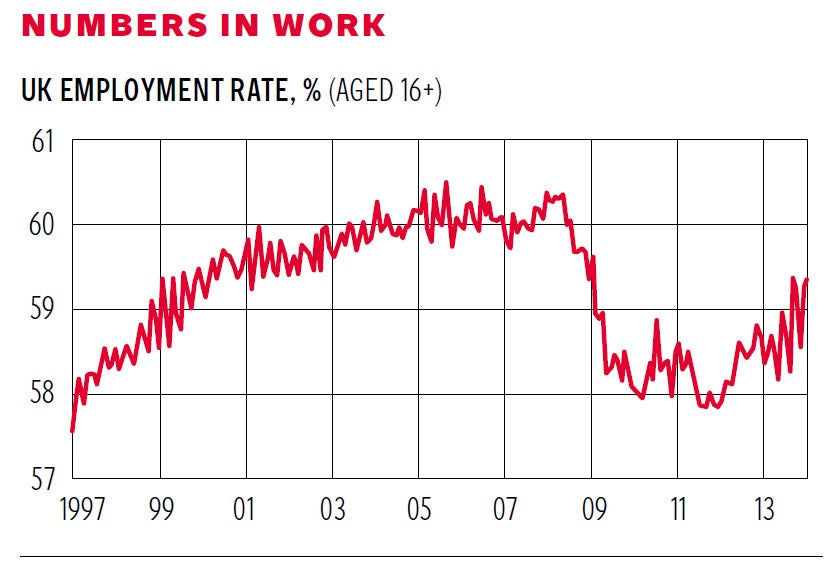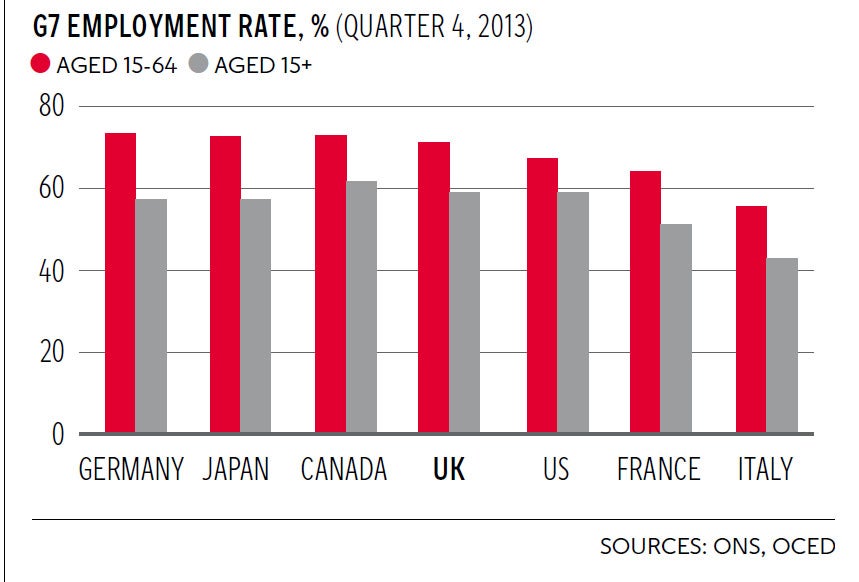George Osborne’s target of full employment looks a tall order. He needs to clarify what his target means
Does the Chancellor want lots of eighty-year-olds in employment? And if so why?


Your support helps us to tell the story
From reproductive rights to climate change to Big Tech, The Independent is on the ground when the story is developing. Whether it's investigating the financials of Elon Musk's pro-Trump PAC or producing our latest documentary, 'The A Word', which shines a light on the American women fighting for reproductive rights, we know how important it is to parse out the facts from the messaging.
At such a critical moment in US history, we need reporters on the ground. Your donation allows us to keep sending journalists to speak to both sides of the story.
The Independent is trusted by Americans across the entire political spectrum. And unlike many other quality news outlets, we choose not to lock Americans out of our reporting and analysis with paywalls. We believe quality journalism should be available to everyone, paid for by those who can afford it.
Your support makes all the difference.At Tilbury Port last week the Chancellor of the Exchequer claimed that he was making “a commitment to fight for full employment in Britain”.
He went on: “Making jobs a central goal of our economic plan. That is what I mean when I say that we are going for full employment … Too many people, especially young people, are still without a job. Many people want better careers. And so our work is not done. We need more jobs to be created in Britain. And we have an ambitious new goal. We want Britain to be the best place in the world for you to find a job. The best place in the world to hold a job. Working to build an economy that supports full employment.”
Wonderful. But such words won’t buy you a cup of coffee unless they are backed up with action. So how exactly are you going for full employment, Chancellor?
The reality is that the UK economy is a long way from full employment, with an unemployment rate of 7.2 per cent and 2.3 million unemployed and with over 800,000 who have been continuously unemployed for at least a year. Mr Osborne actually didn’t define what he meant by “full employment” but it is generally understood by economists to be somewhat above zero, because in a dynamic economy workers will always be changing jobs as firms that make goods that are no longer in demand close to be replaced by firms making goods people do want. Firms die and firms are born all the time.

The general assumption is that full-employment occurs when the unemployment rate is less than 5 per cent. Once the economy starts to approach full employment wages start to rise. This is because there is no longer a pool of available labour to draw from. Workers have to be attracted from competitors via higher wages. There is absolutely no sign of a rise in nominal wage growth, so the UK economy remains a long way from full employment.
To get the UK economy to full employment, that is to get down to 5 per cent unemployment, would require a reduction of around a third in the number of unemployed, or approximately three quarters of a million so that unemployment falls to below 1.5 million. Over the last year employment rose by 600,000 and unemployment fell by 260,000, so to get to full employment would likely require 1.75 million additional jobs, which is a tall order, and won’t happen by election day. The reason that this number is so large is that people who are out of the labour force, including young new entrants, take the majority of the jobs. The UK is miles from full employment.
Mr Osborne went on to claim that there are “record numbers in work”, which is true, but that is only part of the story, as most of this is down to the fact that the population has risen. So let’s put that claim in context. At the start of the recession in April 2008 there were 49,013,000 people in the UK aged 16 and over. The latest estimate we have for January 2014 is that the 16-plus population is now 51,153,000, up 2.8 per cent since the Coalition was formed and 4.4 per cent since the onset of recession.
What about employment? The first chart illustrates what has happened over time to the 16-plus single month employment rate, which is simply the proportion of the population aged 16 and over that is employed. Based on the somewhat volatile single month data this is up since May 2010. But as is also clear from the chart, today’s level is still well below the levels at the start of the recession. A similar story is found if instead we look at the age 16-64 rates. They are also below the peak levels existing at the start of the recession.

Interestingly, the word inflation was nowhere in Osborne’s speech, which is welcome, as it is clear that inflation is yesterday’s story. Now it’s all about jobs, jobs and more jobs. My own research with colleagues at the University of Stirling shows that a one percentage point rise in unemployment is five times worse, in terms of well-being, than is a one percentage point rise in inflation. That is why the US Federal Reserve and the Bank of England have started focusing on the labour market, with inflation an after-thought. Unemployment is everywhere and inflation is nowhere as fears of disinflation and even deflation remind people of the 1930s once again.
But credit where credit is due. From now on, I am going to judge Mr Osborne by how well he does in the labour market: on unemployment, especially among the young. I’ll also judge him on wage growth. But I’ll focus on how the employment rate moves in comparison with the six other member countries in the G7. The reason is that in a subsequent Tweet from his official account Mr Osborne argued: “Today have set an ambition for the UK to have the highest employment rate in G7 – best place to create a job and to get a job”.
So let’s see if that is a realistic goal. The second chart uses comparable data from the OECD across the G7 countries of the two published employment rates for each of the G7 countries for the final quarter of 2013. Mr Osborne needs to clarify which one he means. Does he intend to target the one relating to the adult population age 15-plus, or those of working age 15-64? The reason it matters is that the UK ranks fourth for the 15-64 age group (71.2) behind Germany (73.5), Canada (72.4), and Japan (72.2). The UK ranks third for the 15-plus (58.4), behind Canada (61.7) and the US (58.5). Interestingly we have data for the US for January through March 2014 and that number has now risen to 58.8. It is unclear which rate he wants us to focus on and why. Does he want lots of eighty-year-olds in employment, and if so why?
So I intend to hold the Chancellor’s feet to the fire and judge him on how well the UK is doing moving to 1) full employment and 2) the highest employment rate in the G7. Mr Osborne has just finished the third lap of the 10,000 metres, but there is still a long way to go. I will be watching.
Join our commenting forum
Join thought-provoking conversations, follow other Independent readers and see their replies
Comments